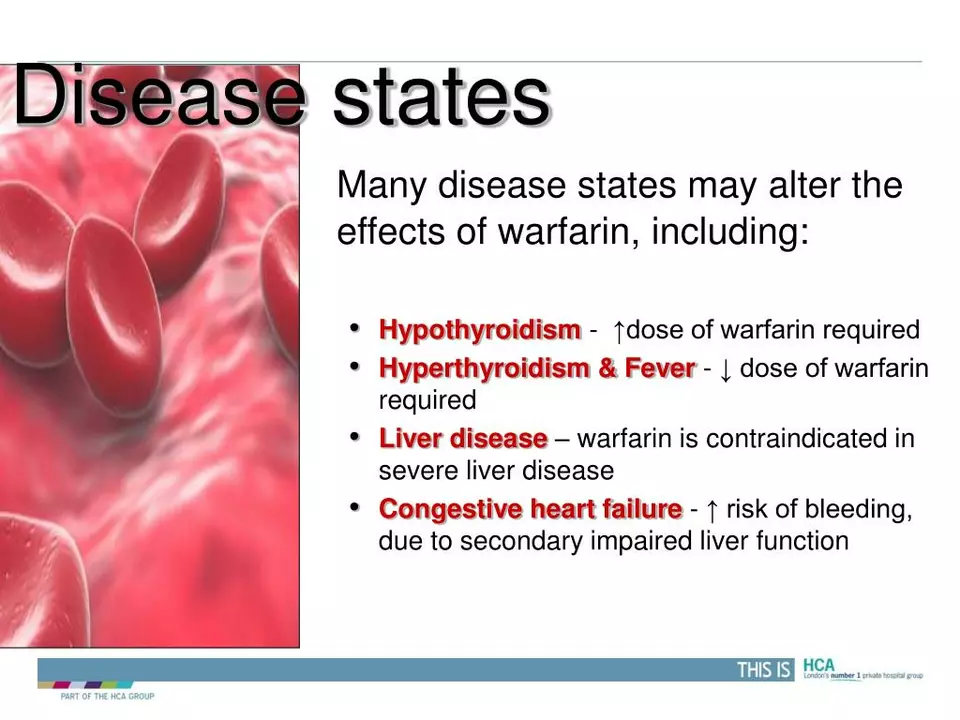Warfarin: what it does and how to stay safe
Warfarin is a blood thinner that prevents clots. It treats and prevents deep vein thrombosis (DVT), pulmonary embolism (PE), atrial fibrillation clots, and clots on some artificial heart valves. The trick with warfarin is balance: too little and you risk clots, too much and you can bleed badly.
How warfarin works and monitoring
Warfarin slows the liver’s production of clotting proteins by blocking vitamin K. That means your dose needs regular checks. Your doctor will use the INR (international normalized ratio) to measure blood clotting. Most people aim for an INR of 2.0–3.0. If you have a mechanical valve or other high-risk conditions, the target may be higher, like 2.5–3.5. Expect frequent INR tests when you start or change medicines, then a stable schedule once your levels are steady.
Common interactions to watch
Many drugs and foods change how warfarin works. Some increase bleeding risk by raising INR; others reduce warfarin’s effect. Watch these real examples:
- Antibiotics and antifungals: metronidazole, trimethoprim–sulfamethoxazole (TMP-SMX), fluconazole, and macrolide antibiotics can raise INR. Tell your prescriber before starting any antibiotic.
- Heart and rhythm drugs: amiodarone can increase warfarin’s effect — doses often need lowering.
- Rifampin and St. John’s wort lower warfarin effect and can drop your INR.
- Pain medicines: avoid regular NSAIDs like ibuprofen or naproxen with warfarin — they raise bleeding risk. Low-dose aspirin also increases bleeding and should only be used if a doctor tells you to.
- Foods: leafy greens (spinach, kale, broccoli) are high in vitamin K and can lower INR. You don’t need to avoid them, but be consistent. Sudden changes in how much vitamin K you eat lead to INR swings.
Herbal supplements matter too. Ginkgo and garlic supplements can raise bleeding risk. Always mention herbs and over-the-counter meds to any clinician.
Missed dose? Take it the same day you remember. Don’t double up the next day. If you’re unsure, call your clinic.
Signs of trouble: unexpected heavy bleeding, large bruises, blood in urine or stool, severe headache or dizziness, coughing up blood. If any of these happen, seek medical care right away. For very high INR or active bleeding, doctors can give vitamin K or clotting factor concentrates to reverse warfarin quickly.
Pregnancy and procedures: warfarin can harm a fetus, so pregnant people usually switch to heparin. For surgery, you’ll likely stop warfarin several days before and may bridge with heparin depending on clot risk—always follow your doctor’s plan.
If you take warfarin, keep a steady diet, tell every clinician and pharmacist you’re on it, and get INR checks as recommended. These habits keep you protected from clots and reduce bleeding risk.
Sports and Anticoagulants: Injury Risk and How to Stay Safe
Athletes on blood thinners face higher bleeding risks during sports. Learn which activities are safe, how DOACs offer more flexibility than warfarin, and proven strategies to compete without risking serious injury.
Warfarin and Drug-Induced Lupus: A Rare but Serious Side Effect
I recently came across an article discussing Warfarin and its connection to drug-induced lupus, which is a rare but serious side effect. Warfarin, a common blood-thinning medication, has been known to cause this autoimmune disorder in some patients. It's important to be aware of this risk, especially if you or a loved one is taking Warfarin. Symptoms of drug-induced lupus can vary, but they often include joint pain, fatigue, and skin rashes. If you notice any of these symptoms while on Warfarin, it's crucial to consult your doctor immediately to prevent complications.


